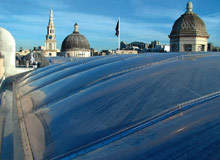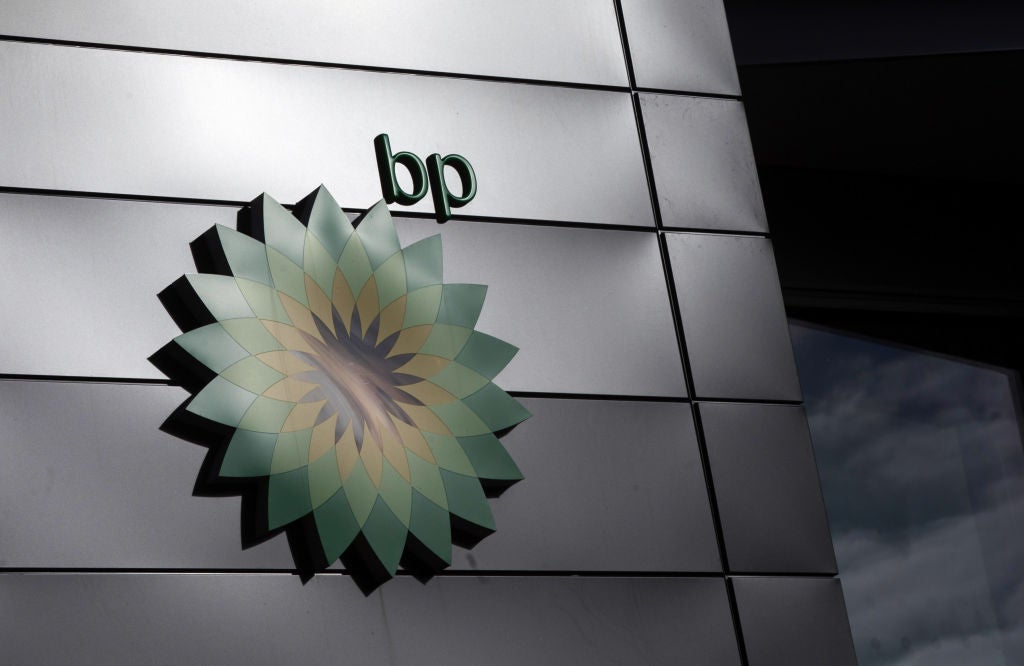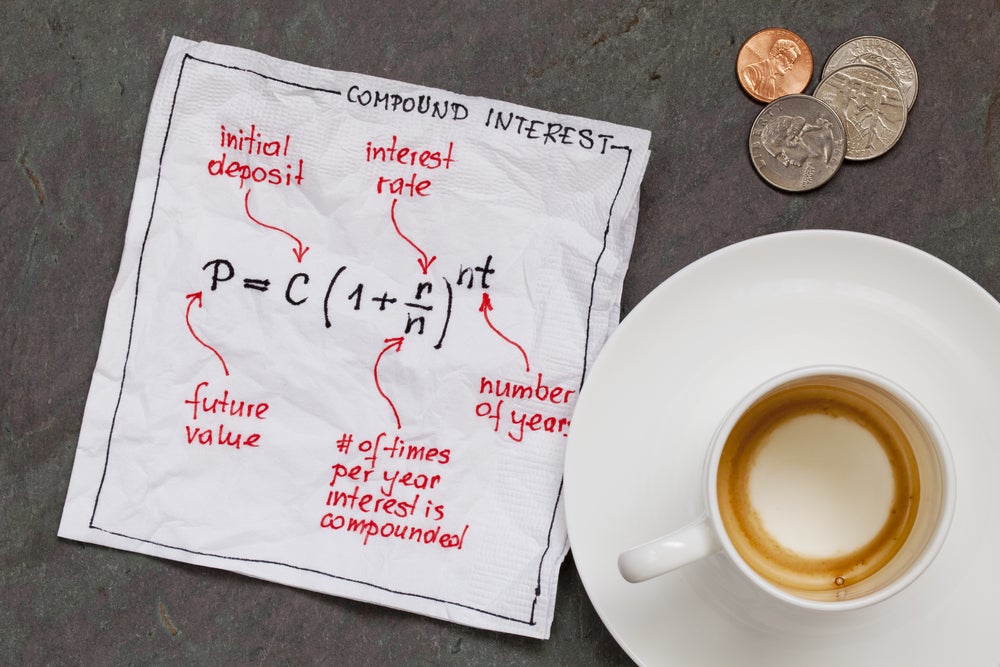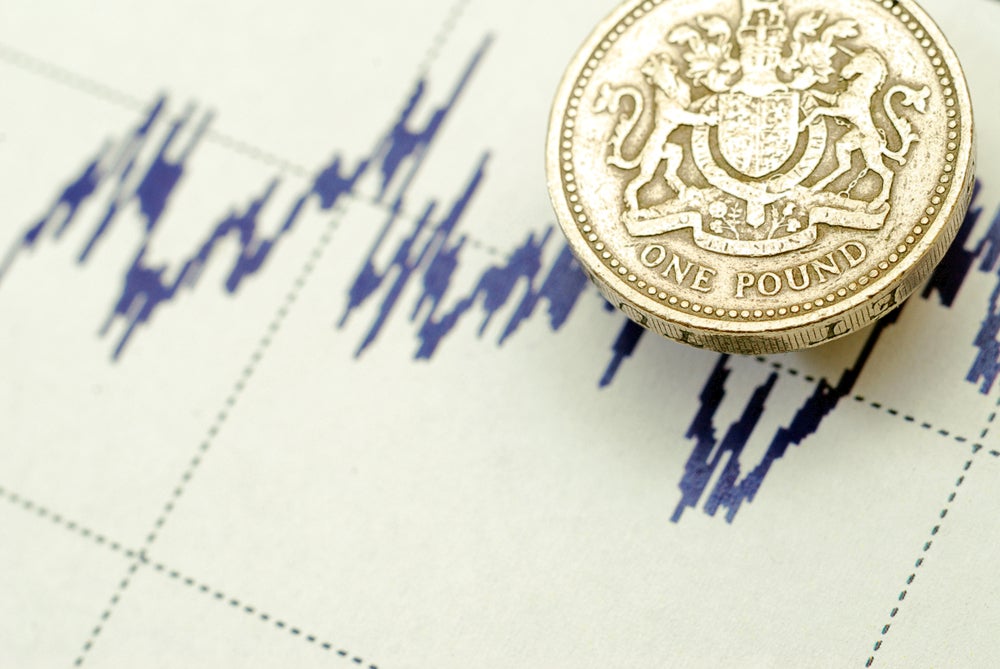
The 2006 World Cup, hosted in Germany, is set to be one of the most colourful thanks to Munich’s recently opened Allianz Arena. The venue has been designed by Swiss architects Jacques Herzog and Pierre de Meuron to glow in the colours of the home team. A series of lighting elements shine through the stadium’s transparent walls in combinations of red, white and blue to represent the strips of the two clubs based there, Bayern Munich and TSV 1860, as well as those of the national team, who will be playing matches there in 2006.
ETHYLENE TETRA FLUOROETHYLENE (ETFE)
Light enters through a substance that is being used in ever larger, more high-profile projects: Ethylene Tetra Fluoroethylene (ETFE). This fluoro polymer was originally developed by Du Pont for NASA as insulation for the space race, as it remained unaffected by ultraviolet radiation. Indeed, samples formed decades ago remain unchanged. Then in the early 1980s, architects realised the material was durable and flexible enough for innovative cladding solutions.
Now, ETFE is to be used in its biggest project yet, the National Swimming Centre for the 2008 Beijing Olympics. Known as the Water Cube, it features 100,000m² of ETFE foils. Design for the centre has been achieved with help from ETFE specialist Vector Foiltec, the firm that pioneered the use of the material. Devised by Australian firm PTW, Ove Arup and China State Construction and Engineering Corporation’s Shenzhen Design Institute, the Cube sits opposite the main Olympic Stadium, again designed by Herzog and de Meuron. EFTE was chosen for this landmark building, as it reacts well to lighting and projection. The $100m transparent Cube glows at night and is made out of blue foil for greater reflectiveness.
The Cube’s design plays on the geometry of water bubbles. Its roof and ceiling make up the external structure, which holds the ETFE cladding in a flat web of box sections bolted together on site. There is also an internal steel frame based on the geometry of soap bubbles. Two to five layers of ETFE are used to make pneumatic cushions, restrained in a lightweight structure.
During the 1970s, the pioneering Frei Otto used plastics to construct tent like structures, such as the 1972 Munich Olympic Games Stadium. Vector Foiltec’s managing director, Ben Morris, acknowledges the debt his company owes to innovators such as Otto and the master of the geodesic dome, Buckminster Fuller, especially in terms of creating a climatic envelope, a structure that protects the interior from the elements outside. ‘Otto and Fuller were both visionary thinkers and engineers,’ says Morris. ‘They predicted the development and use of the climatic envelope. ETFE allows us now to realise some of these concepts.’
See Also:
With its lighter mass, ETFE is more flexible and can allow larger spans than normal glazing, explains Morris: ‘All the rules you know as a classically trained engineer or architect need to change if you want to exploit it.’
How well do you really know your competitors?
Access the most comprehensive Company Profiles on the market, powered by GlobalData. Save hours of research. Gain competitive edge.

Thank you!
Your download email will arrive shortly
Not ready to buy yet? Download a free sample
We are confident about the unique quality of our Company Profiles. However, we want you to make the most beneficial decision for your business, so we offer a free sample that you can download by submitting the below form
By GlobalDataETFE cushions are inflated with low air pressure to provide insulation and resist winds. In terms of energy efficiency, three layers of the material can provide a U-value of 1.96kW/m², though with its latest development, Texlon Nano, Vector can reduce this to 0.3kW/m2.
Despite its heat-retaining properties, the plastic also provides high light transmission. In fact, ETFE is more transparent than glass, though different layers can now incorporate various kinds of shading. The Cube’s colour has been developed specifically at the request of Vector’s client.
After the Games, this iconic building is set to become a leisure and swimming centre with gym, ice rink and cinema. ETFE has proved it is a long-lasting material, with no samples having degraded under ultraviolet light or pollution during its 36-year existence. This makes it especially well suited to low-maintenance structures, not just leisure centres but also hospitals and railway stations.
High levels of natural light enter the Cube to create a greenhouse effect. This power is used to heat the building’s five pools and interior. 90% of solar energy is trapped within the building, and designers predict this can reduce overall energy consumption by 30%. Because ETFE lets in so much light, the Cube can also make up to 55% savings on light energy in the leisure pool area, with smaller savings expected in other sections. Another benefit of ETFE is the smoothness and anti-adhesive properties of the surface; rain actually cleans the building.
THE KEY TO ETFE
Three innovations in particular have led directly to the use of ETFE in Beijing. First came rain suppressors, designed to reduce the noise of water hitting the cushions and devised for phone operator Orange’s Darlington call centre in 1997, designed by Nicholas Grimshaw.
‘We make the skin hairy, as it were, so that it keeps the rain on the surface and reduces the noise,’ says Morris. This reduces rain noise by up to 20db, depending on the space affected. In Beijing, suppressors reduce sound volume from 70db to 60db.
Another key innovation was thermal breaks, which were first introduced in 2003 for a courtyard at the east wing of the National Gallery in London. These prevent cladding condensation spreading from the inside to the outside of the structure. A year later, Vector introduced belt reinforcement, which allowed it to use large cushions for the roof of the Collins Street concourse of Spencer Street Station in Melbourne.
In Beijing, reinforcement enables cushions to be up to 9m across. The double skin is 3.6m in section and able to withstand the extremities of the Chinese climate. These include temperate ranges of 40ºC, plus snow and wind loads. The inner skin has to cope with an environment set at 28ºC, along with that mix of chlorine, uric acid and condensation that is peculiar to swimming pools.
ETFE also meets the rules outlined in China’s Building Code. The material is combustible, but its key attribute is that it shrinks away from heat sources, and thus allows smoke out of a building. Hot gases above 200ºC soften the foil, so that it shrink backs from the smoke plume, venting the fire. Any foil fragments are swept upwards, but because roofing materials are so minimal there is no risk of molten ETFE dripping to the ground.
While huge expanses of glazing are the most visible application of ETFE, Morris sees the future of the material in atriums, especially light wells, where an interior space is classed as outdoors simply because smoke can escape through apertures in the cladding.
‘We only invented light wells in the seventies to improve rental values. What you are beginning to see is the development of big-span enclosures under which there are buildings – (the kind) which Buckminster Fuller used to talk about. The Millennium Dome is one example.’
Another issue for architects is positive energy envelopes, climatic envelopes that react to the environment. These change the insulation properties of the skin and the amount of solar energy that enters a building to modulate the climate inside.
‘We are about three months away from the positive energy envelope, a variable cladding that feeds energy into the building,’ observes Morris. ‘New technologies do change the world (after all).’Indeed, de Rijke Marsh Morgan has already provided a daylight control mechanism for the ETFE roof of Kingsdale School in London. The firm screen-printed a design on two of three membrane layers to provide a pattern of light and dark material. The layers allow in half the available daylight when fully inflated and reduce penetration to 5% when deflated. This has given new purpose to what was originally a courtyard open to the elements; many more activities are now possible, irrespective of the weather – another good example of how this new technology is changing the world.







